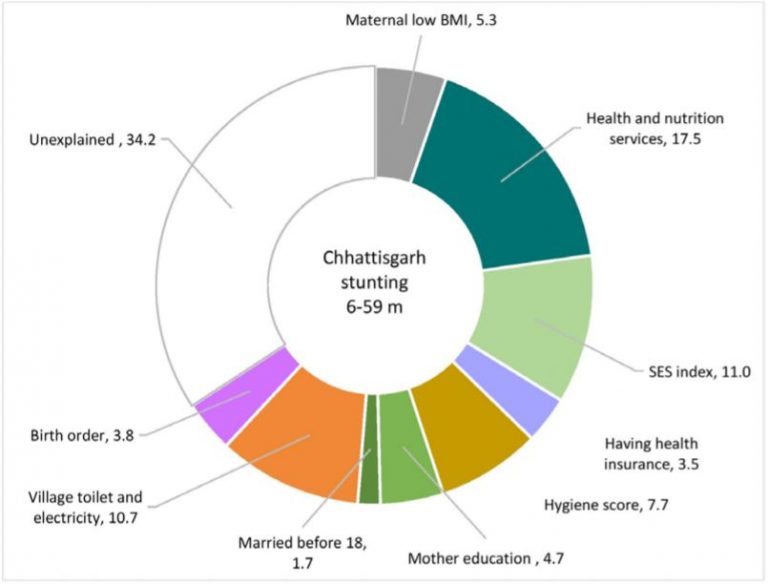
KOHLI – The role of the state government, civil society and programmes across sectors in stunting reduction in Chhattisgarh, India, 2006–2016
Neha Kohli, Phuong H Nguyen, Rasmi Avula, and Purnima Menon
Article first published online: 6 JUL 2020 BMJ Global Health
DOI: 10.1136/bmjgh-2019-002274
ABSTRACT:
Introduction Childhood stunting has declined in India between 2006 and 2016, but not uniformly across all states. Little is known about what helped some states accelerate progress while others did not. Insights on subnational drivers of progress are useful not just for India but for other decentralised policy contexts. Thus, we aimed to identify the factors that contributed to declines in childhood stunting (from 52.9% to 37.6%) between 2006 and 2016 in the state of Chhattisgarh, a subnational success story in stunting reduction in India.
Methods We examined time trends in determinants of stunting using descriptive and regression decomposition analysis of National Family Health Survey data from 2005 to 2006 and 2015–2016. We reviewed nutrition-relevant policies and programmes associated with the drivers of change to construct a policy timeline. Finally, we interviewed multiple stakeholders in the state to understand the changes in the drivers of undernutrition.
Results The regression decomposition analysis shows that multiple factors explain 66% of the change in stunting between 2006 and 2016. Improvements in three key drivers—health and nutrition services, household assets, and sanitation and hygiene—explained 47% of the change in stunting. A shared vision for impact, political stability and capable bureaucracy, state-level innovations, support from development partners and civil society, and community mobilisation were found to contribute to improvements in programmes for health, poverty and sanitation.
Conclusion Change in multiple sectors is important for stunting reduction and can be achieved in subnational contexts. More work lies ahead to close gaps in various determinants of stunting.
Read the full publication at BMJ Global Health